 Divide the first term of the dividend by the first term of the divisor, and write the result as the first term of the quotient. Multiply the whole divisor by the first term of the quotient, and subtract the product from the dividend. Divide the first term of the dividend by the first term of the divisor, and write the result as the first term of the quotient. Multiply the whole divisor by the first term of the quotient, and subtract the product from the dividend.  Elements of Geometry - Page 44by Adrien Marie Legendre - 1825 - 224 pagesFull view Elements of Geometry - Page 44by Adrien Marie Legendre - 1825 - 224 pagesFull view - About this book
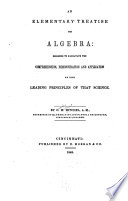 | Ormsby MacKnight Mitchel - Algebra - 1845 - 308 pages
...the next highest exponent second, and so on to the last. To obtain the first term of the quotient, divide the first term of the dividend by the first term of the divisor, and place the quotient in the quotient, as its first term. Multiply every term of the divisor by the first... | |
 | Horatio Nelson Robinson - Algebra - 1846 - 276 pages
...truth of the following rule will become obvious by its great similarity to division in numbers. RULE. Divide the first term of the dividend by the first term of the divisor, and set the result in the quotient.* Multiply the whole divisor by the quotient thus found, and subtract... | |
 | Charles William Hackley - Algebra - 1846 - 542 pages
...polynomials. 1. Arrange the dividend and divisor according to the powers of the same letter ia both. 2. Divide the first term of the dividend by the first term of the divisor, and the result will be the first term in the quotient, by which multiply all the terms in the divisor,... | |
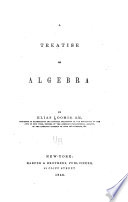 | Elias Loomis - Algebra - 1846 - 380 pages
...OF POLYNOMIALS. 1. Arrange the dividend and divisor according to the powers of the same letter. 2. Divide the first term of the dividend by the first term of the divisor, the result will be the first term of the quotient. 3. Multiply the divisor by this term, and subtract... | |
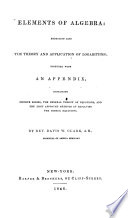 | Davis Wasgatt Clark - Algebra - 1846 - 374 pages
...reference to the power of some letter, so that its exponents shall diminish from left to right. 2. Divide the first term of the dividend by the first term of the divisor ; the result is the first term of the quotient. 3. Multiply the-whole divisor by this term, and subtract... | |
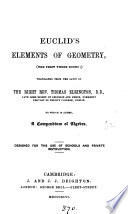 | Euclides - 1846 - 272 pages
...the power or index of a, we place them thus, a6d — a4c + a3b + a2 ; and then proceed by dividing the first term of the dividend by the first term of the divisor, placing the result in the quotient. We next multiply the whole divisor by the quotient thus found,... | |
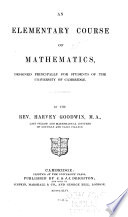 | Harvey Goodwin - Mathematics - 1846 - 500 pages
...according to either ascending or descending powers of some letter common to the two; the division of the first term of the dividend by the first term of the divisor gives the first term of the quotient ; multiply the divisor by this term, and subtract the product... | |
 | Jeremiah Day - Algebra - 1847 - 358 pages
...terms, as shall be necessary to continue the operation : To obtain the first term of the quotient, divide the first term of the dividend, by the first term of the divisor ;* Divide again by the first term of the divisor, and proceed as before, tUl all the terms of the dividend... | |
 | John Bonnycastle - 1848 - 334 pages
...terms of each of them so that the higher powers of one of the letters may stand before the lower. 2. Divide the first term of the dividend by the first term of the divisor, and set the result in the quotient, with its proper sign, or simply by itself, if it be affirmative or... | |
 | Joseph Ray - Algebra - 1848 - 250 pages
...they are found. From the preceding, we derive the BULB, FOR THE DIVISION OF ONE POLYNOMIAL BY ANOTHER. Divide the first term of the dividend by the first term of the divisor, the result will be the first term of the quotient. Multiply the divisor by this term, and subtract... | |
| |